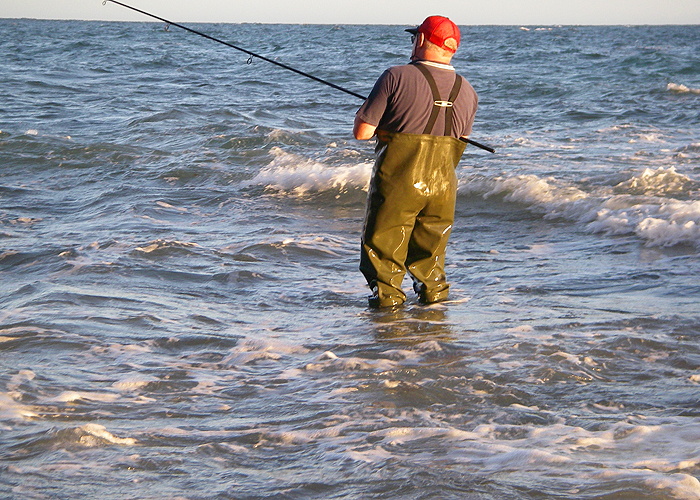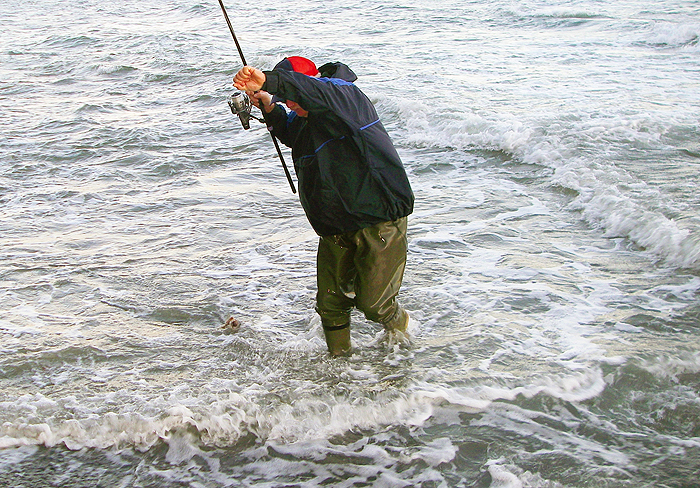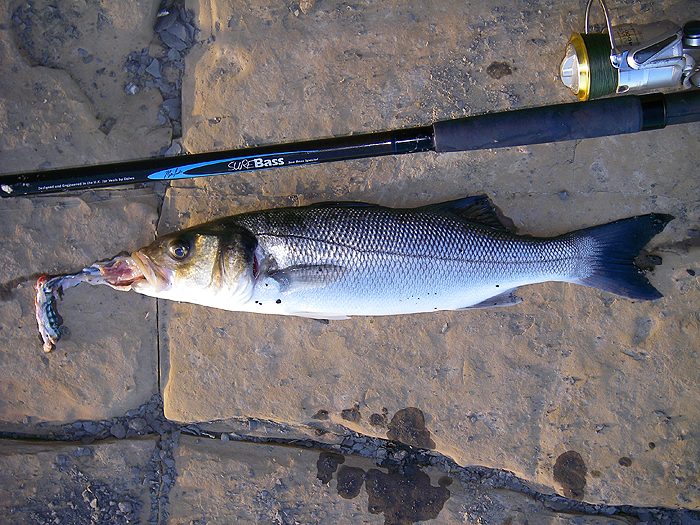 '
'Information Page.
A weight off your mind.
This piece was originally written over twenty years ago when the lead shot ban looked like having a nasty spin off for the sea angler. These days it is a bit less relevant than it used to be but, to judge from the magazines and the shelves of tackle shops , most sea anglers still like heaving lead weights out to sea. Anyway, back in those days it appeared that before long it would be impossible for us to get our hands on a sinker that weighed two ounces or less.
Even today I can hear the cry “so what!” ringing across the land since, as I say, many sea anglers rarely use a lead less than two ounces for their normal beach and boat fishing activities and six to eight ounces of lead is pretty normal.
“Anyway, aren’t there alternatives?” They’re somewhat more expensive than we are used to, but no doubt most of us get by with scarcely a tremor of the rod tip. My own view point is a little more extreme than that of most anglers. If I were told tomorrow that I could never use lead weights again it would scarcely affect my fishing at all. There would be occasions when I would be frustrated by the need to hold bottom in a strong tide or by the knowledge that ‘the fish’ were ‘just beyond casting range’, but for 99% of the time it would be business as usual.
In no sense am I a purist and the last thing I wish to do is tell anyone how they ought to fish (I hate it when anyone does that to me), but under-weighted tackle is much more versatile. I don’t mean simply lobbing a baited hook in to the sea and hoping for the best although free-lining can be very productive. Let me ask you a question. “How many fishing methods have you, personally, tried in saltwater?”
As with any form of angling the first thing to consider is what the fish are likely to be feeding on, and consequently, what sort of bait, natural or artificial, is going to be attractive. Having made this decision, how do you get the bait into the feeding area? Surface-feeding fish may take a buoyant bait delivered on light spinning tackle; casting distance can be increased by using a bubble-float or self-cocking float. Alternatively, denser or bulkier (but still buoyant) lures can be used.
The lightest lures, mackerel strip, tiny spoons or plugs, etc., can be fished at or on the surface by using conventional fly tackle. Modern shooting heads or powerful salmon gear will find the fish, even when they are a fair way out, and floating lines will keep the tackle on top of the water.
Mid-water feeders can be tempted anywhere between the surface and sea-bed by suspending a bait under a float; by tight-lining to a weight with the hook on a dropper above the bed; by using a sinking bait or lure which is kept up by winding in or lifting with a rod either on spinning or fly tackle or, lastly, by using a diving vane either separate from the bait (paravane) or as part of the bait or lure (plug lip).
Generally the thing that limits distance is casting range, but by using water currents or wind skilfully it is sometimes possible to fish floats, buoyant baits or drift line tackle at surprisingly long distances.
For bottom feeders it’s a matter of waiting until the bait settles on the sea-bed after casting out. The settling process can be assisted by adding weight, with or without grips. Distances are limited by how far you are able to cast, but in some situations they can be increased by reducing the amount of weight and bouncing the tackle over the seabed on tidal currents.
Clearly we have the technology to tempt fish in almost any combination of conditions, wind and weather. Why then do most sea anglers restrict themselves to heavy leger or paternoster tactics? Is it the best way to ensure a decent catch of fish?
Of course, this depends on where and when you fish, but in my part of Dorset my pals and I showed conclusively that conventional bottom fishing is often much less productive than methods tailored to catch a particular species.
Just how many kinds of sea fish pick their food up from the sea-bed? Probably most species will ‘grub about’ at times, but a great many of them prefer their menu ‘on the move’. Fishing on-the-drop, sink-and-draw or just slow retrieve are simply ways of giving the bait ‘life’. Often you read about the advantages of fishing a long flowing trace and the ‘movement’ it allows the bait. Even when the baited hook is hard on the bottom a slow retrieve will often attract fish.
I am certain that many readers will now be thinking “it’s all right for him, down in Dorset, where the bass give themselves up”, but, believe me, there are fish keen to take a moving bait on almost every stretch of coast. Of course I have not fished everywhere, but I have had plenty of sport with coalfish and mackerel in the North East, with pollack and wrasse around the Isle of Man, with garfish and scad in Cornwall and with Dorset bass and mullet. All of these species and many others, including flounders, gurnard, codling, even pouting, whiting and rockling, were ‘live food’ addicts.
So how can you gain the confidence to wave a fly rod, spinning rod or even a light float rod amidst the forest of a beach casting poles? Firstly the best confidence booster is to catch a fish or two. As with any new or unfamiliar bait or method it is only too easy to revert to the tried and trusted legered worm (more usually a cocktail of some sort) after the fish less hour. Don’t experiment with unusual methods when there is nothing about, wait until the fish are coming thick and fast before you set up the fly rod or coarse fishing tackle.
Of course, opportunities to test new tactics are not all that common so it may be necessary to cart your light tackle along on every trip, until the chance to use it crops up. Time after time I have lugged three rods and their attendant gear for miles only to carry most of it back unused. It is often easiest to try out a tactic when you are fishing with a couple of pals. With will power (or won’t power) it should be possible for one of you to fish a likely, but untried method alongside conventional or ‘tried and trusted’ tactics.
This is the key to improved and successful methods. There is a powerful urge to beat the next man, but it is easier to suppress this ‘will to win’ if the next man is a good pal and the two of you are fishing to a plan.
The simplest example of a planned fishing session is for each of you to fish at a different distance or for one to fish a slow retrieve while the other nails his bait to the sea-bed. After a while it becomes almost second nature and its good sense anyway. If you’re a ‘loner’, the process of learning will be slower, but there will be no one there to laugh when you sit ten yards from the water and flick your bait into the edge or when you spend three or four futile hours casting and retrieving a sliver of mackerel on a trout-fly rod. I have done both. Eventually the first tactic produced a 9lb bass, the second (after a couple of futile sessions) a mixture of decent bass and mullet.
If you have any comments or questions about fish, methods, tactics or 'what have you.'get in touch with me by sending an E-MAIL to - docladle@hotmail.com
Free lining at close range.
 '
'It works!
 '
'Here's one I caught earlier.
 '
'